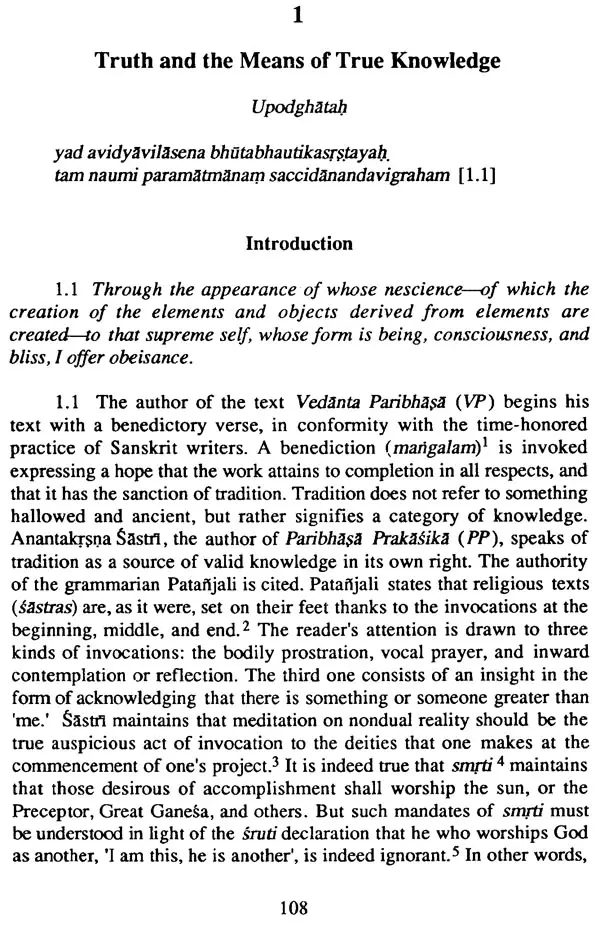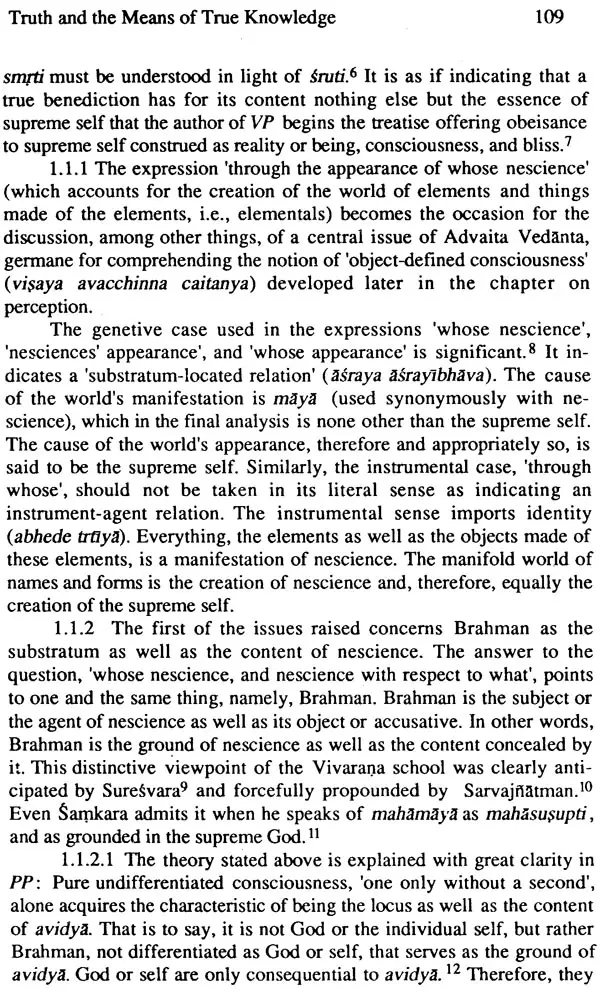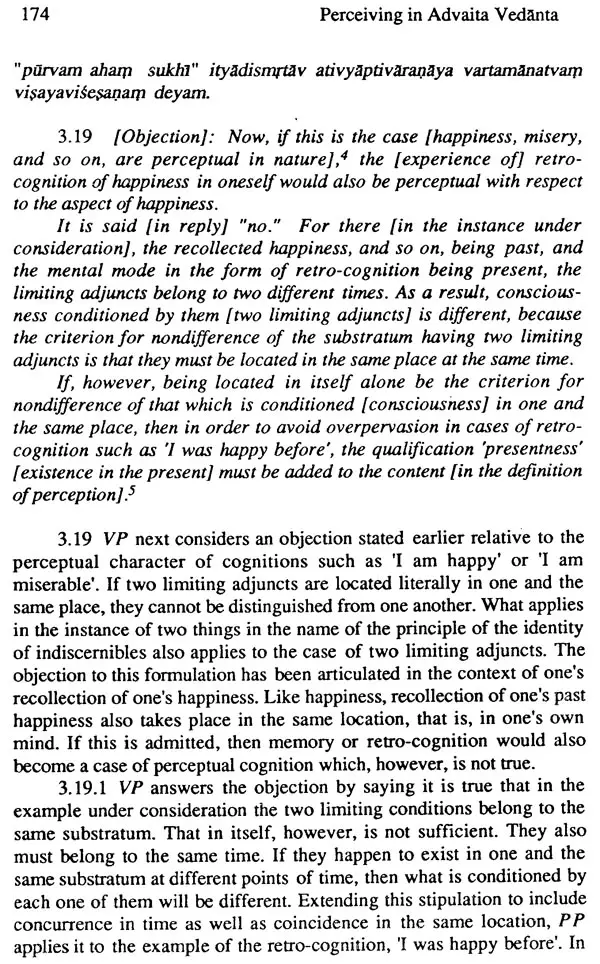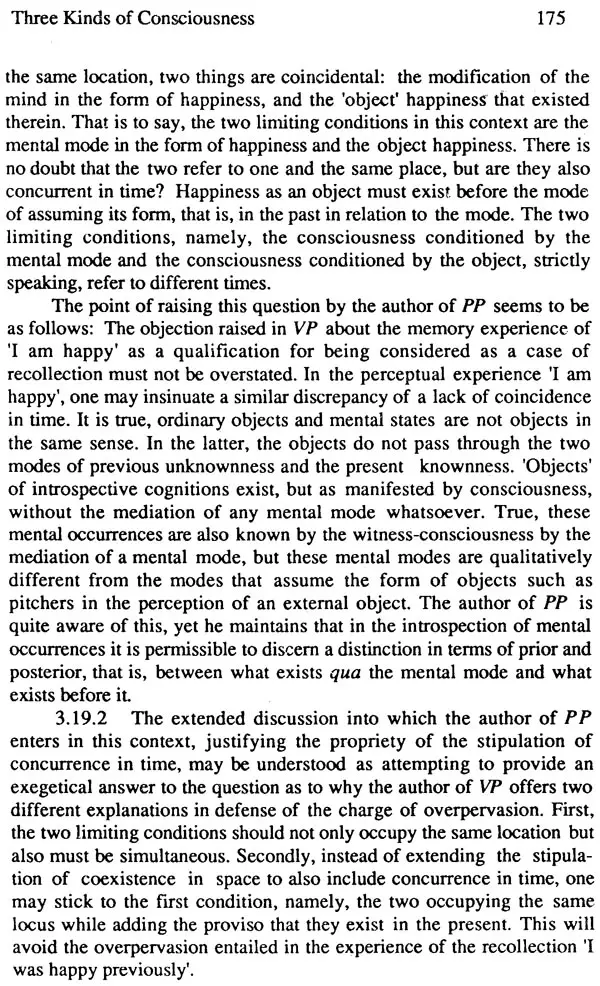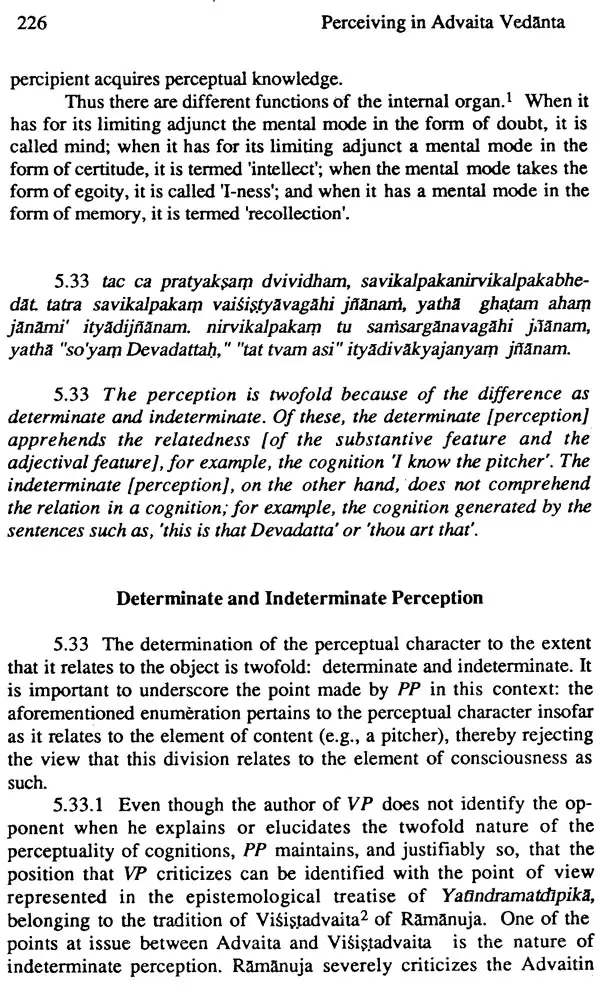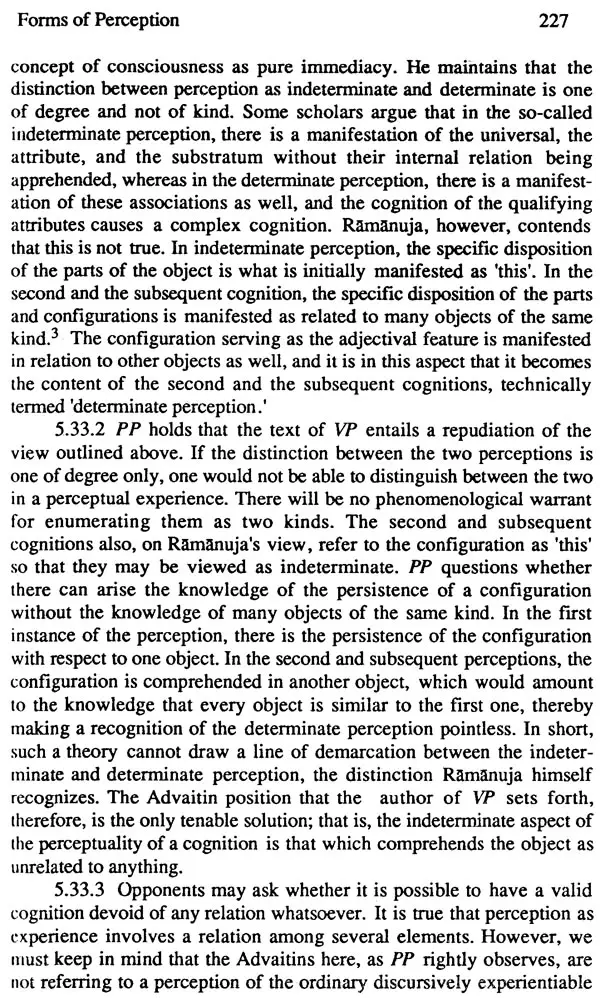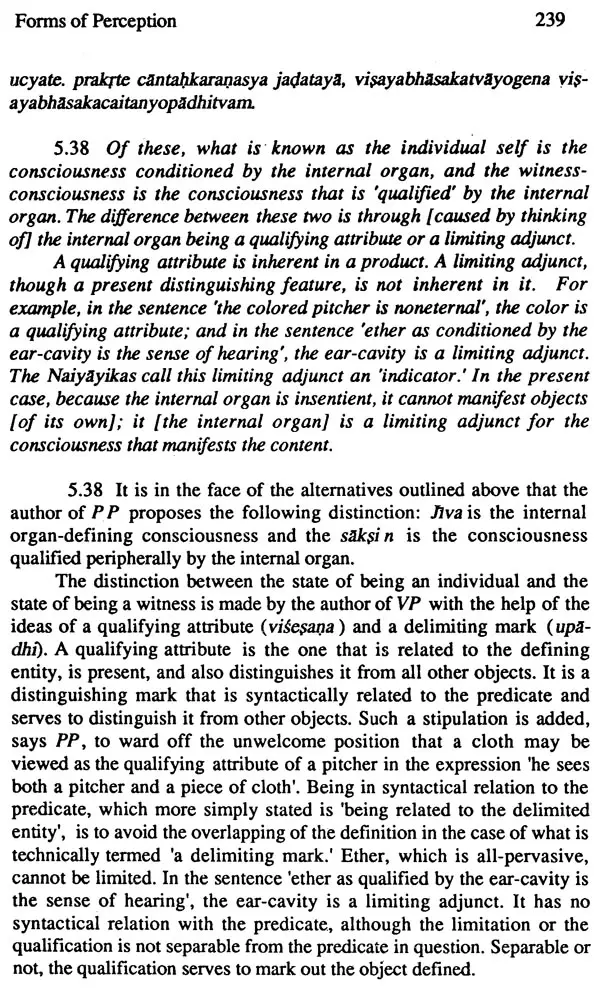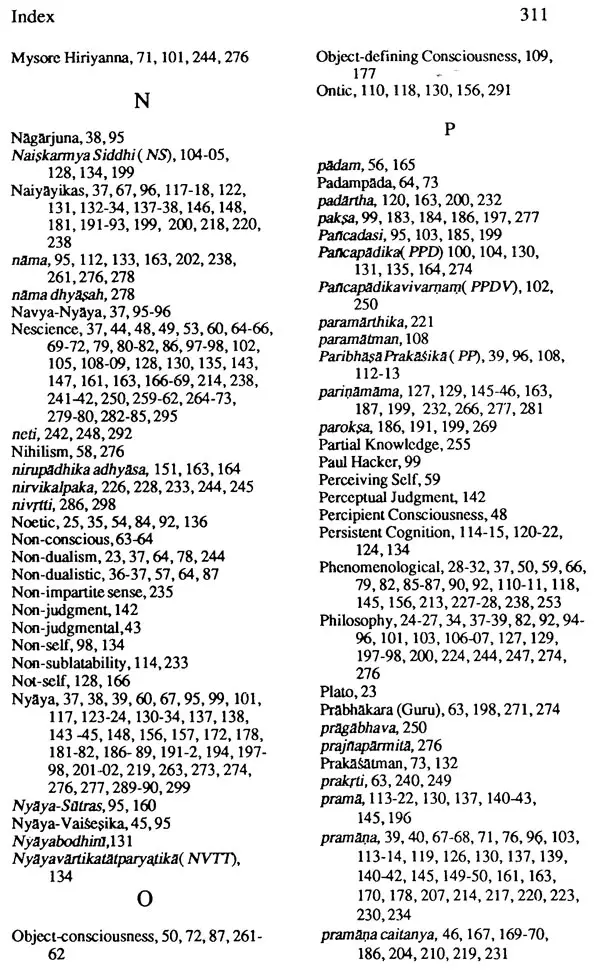
Perceiving in Advaita Vedanta: Epistemological Analysis and Interpretation
Book Specification
| Item Code: | UAD024 |
| Author: | Bina Gupta |
| Publisher: | MOTILAL BANARSIDASS DELHI |
| Language: | English |
| Edition: | 1995 |
| ISBN: | 8120812969 |
| Pages: | 314 |
| Cover: | HARDCOVER |
| Other Details | 9.00 X 6.00 inch |
| Weight | 450 gm |
Book Description
The author has made PP the basis of her exegetical commentary, which incorporates in its analysis the distinctive points of other commentaries on VP. This work not only discusses the issues raised in VP but also the questions not anticipated in the text of VP. It is incisive, analytical, and eminently intraphilosophical with respect to the leading traditions of India.
The theory of perception of the text of VP is Gupta's primary focus. The present work also includes a translation of the perception chapter of the text of VP and a free reconstruction of the gloss provided on it by PP. Additionally, the book contains extensive critical notes clarifying some of the complex ideas contained in VP and PP.
She does not give us only a translation. The notes that she adds introduce the major interpretive issues as well as references to the major commentaries in the Advaita Vedanta theory of consciousness and knowledge.
The theory of perception that Vedantaparibhasa develops is basically an identity theory: in perceptual cognition, the subject and the object achieve a sort of identity. But, on the Advaita metaphysical theory, the only reality is the all pervading difference less consciousness. In that case, the subject of cognition is the same consciousness as limited by the cognitive mechanisms belonging to the empirical person under consideration, just as the object of cognition is also the same consciousness as limited by what ordinarily one would regard as the external thing. In perceptual cognition, the inner sense assumes the form of the object (a very Aristotelian picture); there is a sort of identity between the consciousness as limited by the subjective cognitive mechanism and the consciousness as limited by the thing that is known: this identity is the perceptual cognition. Within this general theory, Advaita Vedanta introduces the idea of a modification of the inner sense, which is called vrtti, whose function is to remove the veil of ignorance that conceals the thing to be known. Although in all cognition, the object is manifested by consciousness in its role as the witness-consciousness, external things are not directly manifested by the witness consciousness. An appropriate modification of the inner sense mediates. This is a complex but highly interesting picture.
In recent times a great deal of attention has been paid to the divergent facets of Advaita Vedanta. Little attention, however, has been paid to its epistemology. As Professor Deutsch points out, "except in the later phases of the tradition, and even here to only a limited extent...there is little awareness of epistemology as a distinct philosophical discipline" (Advaita Vedanta: A Philosophical Reconstruction, 81). One possible explanation for this phenomenon that comes to mind is Advaitic taxonomy. Samkara does not discuss epistemological issues separately, but rather intermingles them with the metaphysical issues.
There are two forms of knowledge: paravidya (higher knowledge) and aparavidya (lower knowledge). Paravidya is the knowledge of Brahman, the Absolute, and aparavidya is the knowledge of every other kind, bearing on the empirical world where the plurality of names and forms is manifested. These two forms of knowledge, Samkara maintains, are incommensurable. The paravidya is sui generis: it is attained all at once-immediately, intuitively. It is neither mediated nor conditional. Such a knowledge is self-certifying, because no other form of knowledge can either confirm or disconfirm it. When Brahman is realized, nothing remains to be known. However, until the attainment of paravidya-the Brahman realization-the aparavidya holds sway as the 'ultimate', but it can never claim the ultimacy that belongs to paravidya.
Book's Contents and Sample Pages

